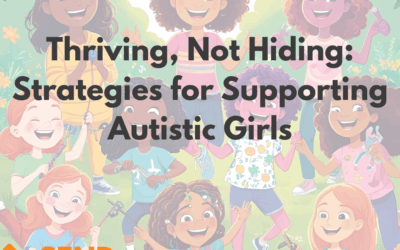Supporting Pupils with Hidden Disabilities and Neurodiversity: ADHD, Autism, Dyslexia, and Dyspraxia
Understanding and supporting pupils with hidden disabilities and neurodiverse conditions is crucial to ensuring an inclusive education for all learners. Neurodiversity includes conditions like ADHD, autism, dyslexia, and dyspraxia, all of which affect how individuals think, learn, and interact with the world. Each condition presents its own unique challenges, but with the right support, students with neurodiverse conditions can thrive in the classroom.
Supporting Pupils with ADHD
Attention Deficit Hyperactivity Disorder (ADHD) is a neurodevelopmental condition that affects a pupil’s ability to focus, control impulses, and regulate their energy levels. Pupils with ADHD may appear easily distracted, restless, or impulsive. However, these challenges often come with strengths such as creativity, energy, and a unique approach to problem-solving.
To support pupils with ADHD, Quality First Teaching (QFT) strategies can be highly effective. Some helpful strategies include:
- Clear structure and routines to help the pupil understand expectations and stay on track.
- Short, manageable tasks to maintain focus and reduce feelings of overwhelm.
- Movement breaks and sensory tools to help with self-regulation.
- Visual aids and reminders to help pupils stay organised and focused on tasks.
Supporting Autistic Pupils
Autism, or Autistic Spectrum Condition (ASC), is a spectrum of conditions that affect social communication, sensory processing, and behavioural responses. Every pupil with autism is unique, but they may face challenges in understanding social cues, managing sensory input, and communicating their needs.
To support autistic pupils, it is essential to:
- Provide clear, direct communication, avoiding idioms or ambiguous language.
- Use visual schedules and social stories to prepare pupils for transitions or new situations.
- Create sensory-friendly environments, which may involve reducing noise levels, providing sensory breaks, or using calming tools.
- Offer structured social interactions to help pupils build social skills in a supportive environment.
Supporting Dyslexic Pupils
Dyslexia is a specific learning difficulty that affects the ability to read, write, and spell. Pupils with dyslexia may struggle with decoding words, spelling, and organising written work, but they often excel in areas such as problem-solving, creativity, and visual thinking.
Support for dyslexic pupils includes:
- Multi-sensory learning approaches, such as using visual, auditory, and tactile methods to reinforce learning.
- Using assistive technology, like text-to-speech software or spell checkers, to support reading and writing tasks.
- Breaking tasks into smaller chunks to avoid cognitive overload and help pupils focus on one step at a time.
- Providing extra time for reading and writing and allowing for oral responses where possible.
Supporting Dyspraxic Pupils
Dyspraxia, also known as Developmental Coordination Disorder (DCD), affects motor coordination and planning. Pupils with dyspraxia may struggle with tasks that require fine motor skills, such as handwriting, or gross motor skills, like running or balancing. This condition can also impact organisation, planning, and time management.
Effective support strategies include:
- Using assistive tools like pencil grips, writing slopes, or adaptive scissors to make tasks more manageable.
- Encouraging physical activities that improve coordination, such as swimming or dancing.
- Providing extra time for tasks and breaking them down into smaller, more manageable steps.
- Creating a predictable, well-organised environment to support pupils with planning and organisation challenges.

Empowering Neurodiverse Students: The Path to Success
Each of these neurodiverse conditions presents a unique set of challenges, but with the right support and understanding, students with ADHD, autism, dyslexia, and dyspraxia can not only cope but thrive. It is essential for educators to approach these conditions with empathy, flexibility, and a commitment to inclusion.
To explore more strategies for supporting neurodiverse students, check out the SEND Guide 2024. This resource provides in-depth, practical advice for educators on how to tailor their teaching methods to meet the needs of all learners, including those with neurodiverse conditions. Purchase your copy now and gain access to expert insights that will transform your SEND provision.
Sign up today for further tips and information about supporting neurodiverse students, and learn how the SEND Guide can help you create a more inclusive learning environment. Learn more here.

